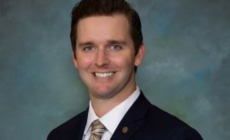-
Braves’ Chris Sale Could Be Out for Season After Unfortunate Update - 8 mins ago
-
Park Avenue Killer Bought Rifle for $1,400 From His Casino Boss - 26 mins ago
-
Jhoan Duran Trade Sweepstakes Gaining Steam As Deadline Nears - 43 mins ago
-
Canada’s Measles Cases Surpass U.S., Alberta Officials Push for State of Emergency - about 1 hour ago
-
Danville, Virginia City Councilman Set Ablaze After Being Doused with Gasoline - about 1 hour ago
-
Angels Make Surprising Trade for Luis Garcia, Andrew Chafin - 2 hours ago
-
Pilots for Army Black Hawk Discussed Changing Course Before Crash - 2 hours ago
-
Pittsburgh Steelers QB Aaron Rodgers Doesn’t Hold Back About Mike Tomlin - 2 hours ago
-
Flights Are Disrupted at Airports Across U.K. After Radar Problem - 3 hours ago
-
Cleveland Browns HC Gives Shedeur Sanders Training Camp Update - 3 hours ago
How ICE is disrupting public health in Southern California

Missed childhood vaccinations. Skipped blood sugar checks. Medications abandoned at the pharmacy.
These are among the healthcare disruptions providers have noticed since Immigration and Customs Enforcement operations began in Southern California earlier this month.
Across the region, once-busy parks, shops and businesses have emptied as undocumented residents and their families hole up at home in fear. As rumors of immigration arrests have swirled around clinics and hospitals, many patients are also opting to skip chronic-care management visits as well as routine childhood check-ups.
In response, local federally qualified health centers — institutions that receive federal funds and are required by law to provide primary care regardless of ability to pay — have been scrambling to organize virtual appointments, house calls and pharmacy deliveries to patients who no longer feel safe going out in public.
“We’re just seeing a very frightening and chaotic environment that’s making it extremely difficult to provide for the healthcare needs of our patients,” said Jim Mangia, president of St. John’s Community Health, which offers medical, dental and mental health care to more than 100,000 low-income patients annually in Southern California.
Prior to the raids, the system’s network of clinics logged about a 9% no-show rate, Mangia said. In recent weeks, more than 30% of patients have canceled or failed to show. In response, the organization has launched a program called Healthcare Without Fear to provide virtual and home visits to patients concerned about the prospect of arrest.
“When we call patients back who missed their appointment and didn’t call in, overwhelmingly, they’re telling us they’re not coming out because of ICE,” said Mangia, who estimates that 25% of the clinic’s patient population is undocumented. “People are missing some pretty substantial healthcare appointments.”
A recent survey of patient no-shows at nonprofit health clinics across Los Angeles County found no universal trends across the 118 members of the Community Clinic Assn. of L.A. County, President Louise McCarthy said. Some clinics have seen a jump in missed appointments, while others have observed no change. The data do not indicate how many patients opted to convert scheduled in-person visits to telehealth so they wouldn’t have to leave home, she noted.
Patients have also expressed concerns that any usage of health services could make them targets. Earlier this month, the Associated Press reported that the U.S. Department of Health and Human Services shared the personal data of Medicaid enrollees with the U.S. Department of Homeland Security, including their immigration status. No specific enforcement actions have been directly linked to the data.
“The level of uncertainty and anxiety that is happening now is beyond the pale,” McCarthy said, for patients and staff alike.
County-run L.A. General Medical Center issued a statement on Thursday refuting reports that federal authorities had carried out enforcement operations at the downtown trauma center. While no immigration-related arrests have been reported at county health facilities, “the mere threat of immigration enforcement near any medical facility undermines public trust and jeopardizes community health,” the department said in a statement.
Los Angeles County is among the providers working to extend in-home care options such as medication delivery and a nurse advice line for people reluctant to come in person.
“However, not all medical appointments or conditions can be addressed remotely,” a spokesperson said. “We urge anyone in need of care not to delay.”
Providers expressed concern that missing preventative care appointments could lead to emergencies that both threaten patients’ lives and further stress public resources. Preventative care “keeps our community at large healthy and benefits really everyone in Los Angeles,” said a staff member at a group of L.A. area clinics. He asked that his employer not be named for fear of drawing attention to their patient population.
Neglecting care now, he said, “is going to cost everybody more money in the long run.”
A patient with hypertension who skips blood pressure monitoring appointments now may be more likely to be brought into an emergency room with a heart attack in the future, said Dr. Bukola Olusanya, a medical director at St. John’s.
“If [people] can’t get their medications, they can’t do follow-ups. That means a chronic condition that has been managed and well-controlled is just going to deteriorate,” she said. “We will see patients going to the ER more than they should be, rather than coming to primary care.”
Providers are already seeing that shift. When a health team visited one diabetic patient recently at home, they found her blood sugar levels sky-high, Mangia said. She told the team she’d consumed nothing but tortillas and coffee in the previous five days rather than risk a trip to the grocery store.
Source link



















